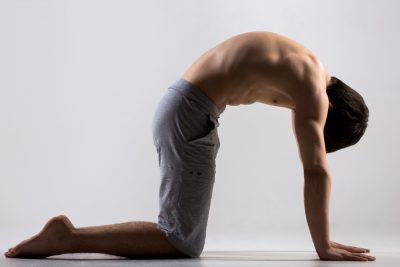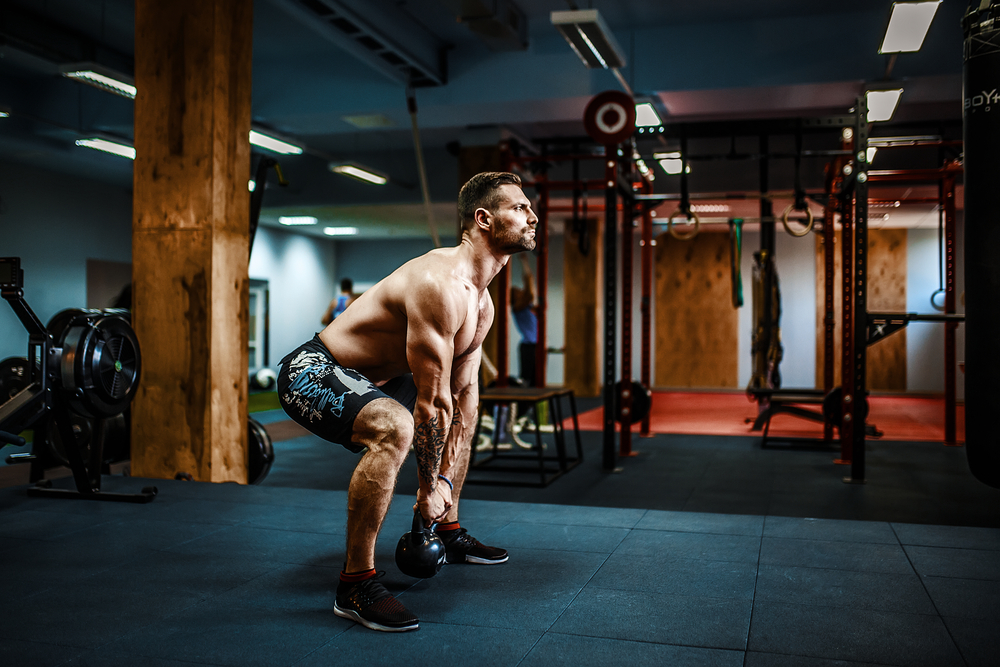When all your muscles are working together, that is when your bodies function at their peak. If you have weak muscles, particularly in your pelvis and core, you would be more susceptible to having back injury or pain. Your day to day activities can be negatively impacted if you have lower back pain. Studies have proven that you can treat lower back pain by performing strengthening exercises.
The most effective way to avoid low back pain is to live a healthy lifestyle. As you get older, you can minimize low back pain by steering clear of risky activities, try to build strength, and minimize your weight gain.
The best lower back workouts
These are the best workouts that can help strengthen your lower back and help reduce your chances of sustaining lower back injuries. If performed with perfect form, these exercises would provide you with a lot of benefits.
Kettlebell Swings
In addition to working your back’s posterior chain, the kettlebell swing is a movement that targets the front of your core. If you want to perfect the form, you can try using a light weight, and then you can develop body control and explosive power by moving to a heavier weight. These are the steps to perform the kettlebell swings;
- Stand tall with your feet apart by a distance of your shoulder width, and ensure that you keep a kettlebell on the floor a bit in front of you.
- Keep your knees slightly bent, and your hips hinged to use an overhand grip to grasp the weight with your two hands. Ensure you do not lower into a squat, keep your core tight and your spine aligned.
- Imagine you are snapping a football and pull the kettlebell back between your knees.
- Squeeze your back, straighten your knees, and explode through your hips to swing the kettlebell.
- Ensure the weight does not swing above your shoulders.
- Maintain your form and use a powerful force to swing back down between your legs. Then repeat.
Deadlift
The deadlift is an exercise that is very efficient when it comes to strengthening your back, especially when it is done correctly. To prevent injuries from occurring, you need to engage all your back muscles so that your lower back doesn’t round, and your torso remains straight. These are the steps to perform the deadlift;
- Roll a loaded barbell against your shins. Use an overhand grip to grasp the bar while bending at your knees and hips, then keep your hand slightly beyond shoulder width.
- Thrust your hips forward, pull your torso up, and keep your lower back in a natural arch while standing up with the barbell.
- Revert to the initial position by lowering the barbell. Then repeat.
Kneeling Lat Pulldown
This is different from the traditional pulldown as you would have a different base, which would take away your ability to ride the cable when you get to the top of the move and not need to brace your knees. You can also use this to perfect your form for the different versions of the exercise. These are the steps to perform the kneeling lat pulldown;
- Setup yourself in front of the cable tower by getting down on your knees while ensuring that the bar is first placed at a position that is as high as you can get without needing to raise yourself off the floor.
- Ensure your position is kept stable throughout the move by squeezing your core and glutes.
- Use an overhand grip to grasp the bar and pull the bar down to the top of your chest with your back muscles.
- Maintain this position for a while, and then use a controlled movement to revert the bar to its initial position.
Bent-Over Barbell Rows
This is a version of the barbell row that allows you to use more weight, unlike the other versions, like the single-arm dumbbell row. You would get more muscle groups in your middle and lower traps as you row with heavier loads. Ensure you do not overload the bar and that you use the correct form. These are the steps to perform the bent-over barbell rows;
- Keep your hands slightly further than shoulder-width apart and grasp the barbell with an overhand grip. Keep your hips hinged and keep lowering your torso until it is close to being parallel with the ground.
- Ensure you do not round your back and keep it in a natural arch.
- Squeeze your shoulder blades toward each other and pull the bar to your upper abs.
- Maintain this position for a moment, then use a slow and controlled motion to lower the bar to the initial position.
Superman
It has already been established that to maintain good posture; you need strong back extensors. The superman exercise can help strengthen your back extensors and improve pelvic and spinal support. These are the steps to perform the superman exercise;
- Start by lying with your face down on the floor and keep your two arms stretched out in front of you. Also, ensure that our legs are flat and stretched out on the floor.
- Lift your both feet and hands and aim to make a space of about 6 inches between the floor and them.
- Engage your core muscles by trying to pull in the bellybutton and lifting it off the ground.
- Prevent neck injuries by looking at the floor and keeping your head straight.
- Keep your feet and arms stretched outward as much as you can.
- Maintain this position for about two seconds, then revert to the initial position.
Cat stretches
This is a move that can help ease the tension in your back muscles in addition to making it stronger and also lengthening your back. These are the steps to perform the cat stretch;
- Mount your starting position by getting down onto all fours and keep your keeps apart by a distance of your hip width.
- Pull your belly button up toward your spine while arching your back.
- Allow your abdomen to sag toward the ground while you relax your muscles slowly.
- Revert to the starting position and repeat this movement about three to five times per day.
Lying lateral leg lifts
This move targets your hip abductor muscles. These are the muscles that provide support to your pelvis and also help in reducing the stress placed on the back. The strength of these muscles is needed because they help you keep balance and also impact mobility. These are the steps to perform this move;
- Keeping your legs together, lie down on your side with and ensure that your lower leg is bent slightly.
- Engage your core muscles by drawing your belly button into the spine.
- Lift your higher leg up to 18 inches and keep it extended and straight. Maintain this position for about two seconds. Do this ten more times.
- Switch over to the opposite side and do it again by raising your other leg.
- Aim to do three sets each on both sides.
Pelvic tilts
This is an exercise that can keep your back muscles flexible in addition to releasing the tight back muscles. These are the steps to perform the pelvic tilts;
- Keep your arms by your sides, your feet flat, and your knees bent while lying on the floor.
- Push your stomach out while arching your lower back gently.
- Maintain this position for about 5 seconds before you relax.
- Flatten your back and then pull your belly button towards the ground.
- Maintain this position for about 5 seconds before you relax.
- As time goes on, you can do more reps per day.
Lower back rotational stretches
If you are looking to relieve tension in your trunk and lower back, you should consider performing the lower back rotational stretches. In addition to that, it would also improve stability by working your core muscles. These are the steps to perform the lower back rotational stretches;
- Lie with your back on the ground while keeping your feet flat on the ground and your knees bent.
- Roll your two bent knees over to one side while keeping your shoulders firm on the ground.
- Maintain this position for about ten seconds and then revert to the initial position.
- Roll over your bent knees to the other side gently, maintain this position for ten seconds and then revert to the initial position.
- Do this move two to three times per day.
Bridges
The gluteus maximus (largest butt muscle) is the main muscle targeted when performing bridges. When moving your hips, this is the muscle that is engaged. This muscle is an essential muscle in the body, and it supports your lower back when it is strong. These are the steps to perform the bridges;
- Lie with your back on the floor and keep your knees bent. Also, place your feet at hip-width apart and flat on the floor.
- Keep your arms by your sides and press your feet into the ground.
- Lift your butt off the floor until your body makes a straight line from your shoulders to your knees.
- Keeping your shoulders on the floor, squeeze your buttocks.
- Then, lower your buttocks to the floor and then rest for some seconds.
- Do this fifteen more times and have a 1-minute break.



